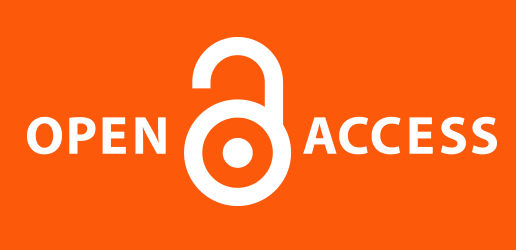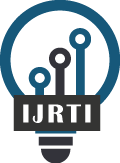|
International Journal for Research Trends and Innovation
International Peer Reviewed & Refereed Journals, Open Access Journal
ISSN Approved Journal No: 2456-3315 | Impact factor: 8.14 | ESTD Year: 2016
Scholarly open access journals, Peer-reviewed, and Refereed Journals, Impact factor 8.14 (Calculate by google scholar and Semantic Scholar | AI-Powered Research Tool) , Multidisciplinary, Monthly, Indexing in all major database & Metadata, Citation Generator, Digital Object Identifier(DOI)
|
Issue: October 2025
Volume 10 | Issue 10
Review Result and Publication of Paper within : 2-3 days
Click Here For more DetailsFor Authors
Forms / Download
Published Issue Details
Editorial Board
Other IMP Links
Facts & Figure
Impact Factor : 8.14
Issue per Year : 12
Volume Published : 10
Issue Published : 113
Article Submitted : 18259
Article Published : 7795
Total Authors : 20600
Total Reviewer : 750
Total Countries : 142
Indexing Partner
Licence
This work is licensed under a Creative Commons Attribution-NonCommercial 4.0 International License







|
Published Paper Details
|
|
| Paper Title: | Muslim Women and Indian Politics |
| Authors Name: | Tabassum Bijapur M. , Dr. M. Yariswamy |
| Download E-Certificate: | Download |
| Author Reg. ID: |
IJRTI_185571
|
| Published Paper Id: | IJRTI2303060 |
| Published In: | Volume 8 Issue 3, March-2023 |
| DOI: | |
| Abstract: | In the areas of social, political, economic, cultural, and other development endeavors, women are among the most vulnerable groups. The patriarchal and feudal structures prevent women from being fully empowered in the various areas of growth. Women are still demonstrating positive signs of empowerment in many areas of development, despite the fact that it has been a more difficult job to free them from various forms of social evils against them. Similar to how women's empowerment in all religions reveals startling data that even today, a group of people is being neglected by their traditional taboos in economic activity, employment, and education. Muslims make up the second-largest group in the world, but neither their male nor their female peers are given equal consideration in terms of development. Muslim traditionalists have a misconception that they are unwilling to teach their women because most of their male peers are engaged in business activities such as working in stores, food stalls, vendors, etc. Even if Muslim women are well educated, it can be difficult for them to locate a suitable husband within the Muslim society. The majority of Muslim women are frequently prevented from attending education because the masculine gender imbalance can be corrected. Every Muslim man and Muslim woman is required by the Prophet Mohammed to pursue information, but these statements are only made on paper and not in practice. As soon as Muslim women get puberty their involvement in education has condensed as they are married at the early age for their Muslim men. According to the Census data of religious communities 2011, Jains with 94.9% literates are followed by the Christians, whose literacy rate is 84.5%. The Buddhists have 81.3% literates, the Sikhs 75.4%, the Hindus 73.3% and the Muslims 68.5%. Likewise Jain women also lead in the literacy charts with a literacy rate of 92.9%, followed by Christians (81.5%), Buddhists (74%), Sikhs (70.3%), Hindus (64.3 %) and Muslims (62%) (Newpost 2015). |
| Keywords: | Muslim, Politics, India, Women etc. |
| Cite Article: | "Muslim Women and Indian Politics", International Journal of Science & Engineering Development Research (www.ijrti.org), ISSN:2455-2631, Vol.8, Issue 3, page no.357 - 360, March-2023, Available :http://www.ijrti.org/papers/IJRTI2303060.pdf |
| Downloads: | 000205093 |
| ISSN: |
2456-3315 | IMPACT FACTOR: 8.14 Calculated By Google Scholar| ESTD YEAR: 2016 An International Scholarly Open Access Journal, Peer-Reviewed, Refereed Journal Impact Factor 8.14 Calculate by Google Scholar and Semantic Scholar | AI-Powered Research Tool, Multidisciplinary, Monthly, Multilanguage Journal Indexing in All Major Database & Metadata, Citation Generator |
| Publication Details: |
Published Paper ID: IJRTI2303060
Registration ID:185571
Published In: Volume 8 Issue 3, March-2023
DOI (Digital Object Identifier):
Page No: 357 - 360 Country: Dharwad, Karnataka, India Research Area: Social Science and Humanities Publisher : IJ Publication Published Paper URL : https://www.ijrti.org/viewpaperforall?paper=IJRTI2303060 Published Paper PDF: https://www.ijrti.org/papers/IJRTI2303060 |
| Share Article: | |
|
Click Here to Download This Article |
|
| Article Preview | |
|
|
|
Major Indexing from www.ijrti.org
| Google Scholar | ResearcherID Thomson Reuters | Mendeley : reference manager | Academia.edu |
| arXiv.org : cornell university library | Research Gate | CiteSeerX | DOAJ : Directory of Open Access Journals |
| DRJI | Index Copernicus International | Scribd | DocStoc |
ISSN Details
 |
 |
ISSN: 2456-3315
Impact Factor: 8.14 and ISSN APPROVED,
Journal Starting Year (ESTD) : 2016
DOI (A digital object identifier)
 Providing A digital object identifier by DOI.ONE How to Get DOI? |
Conference
Open Access License Policy
Important Details
Join RMS/Earn 300
WhatsApp
Click Here
Click Here
Indexing Partner |
|||
| Copyright © 2025 - All Rights Reserved - IJRTI | |||






